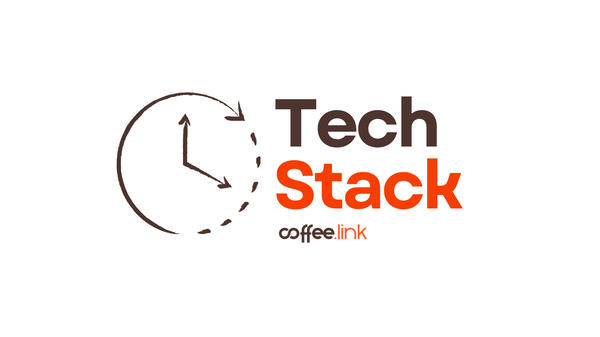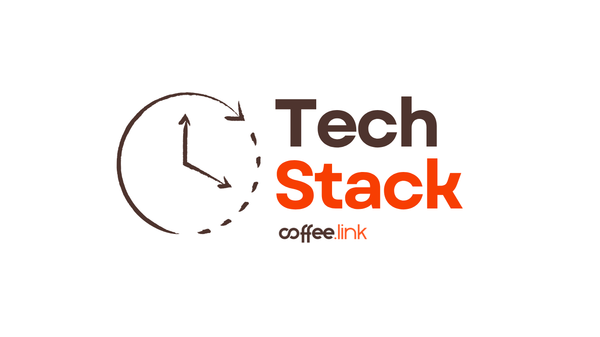Welfare programs weren't designed to end capitalism—they were created to save it. From Bismarck's 1880s social insurance schemes to today's Universal Basic Income experiments in Silicon Valley, the welfare state represents capitalism's most effective tool for managing its own contradictions: maintaining consumer demand, preventing revolutionary threats, and ensuring long-term system stability.
This relationship is neither straightforward charity nor socialist transformation, but rather a pragmatic accommodation that has shaped modern economies. The postwar "Golden Age" (1945-1973) demonstrated this symbiosis spectacularly: robust welfare states coincided with unprecedented growth rates of 4-5% annually, near-full employment, and exceptional financial stability. Today, as Silicon Valley confronts AI-driven automation and the erosion of traditional employment, tech leaders are rediscovering the same demand management logic that justified welfare states during the Great Depression—asking the same fundamental question: who will have purchasing power to buy products in an automated economy?
Bismarck's calculation: buying off revolution
The world's first modern welfare state emerged not from humanitarian impulses but from cold political calculation. In 1880s Germany, Chancellor Otto von Bismarck faced a growing socialist movement threatening the newly unified German Empire. His response was revolutionary: create social insurance to preserve capitalism by giving workers just enough security to abandon revolutionary politics.
Historian Jonathan Steinberg described Bismarck's motivation bluntly: "That was a calculation. It had nothing to do with social welfare. He just wanted some kind of bribery to get social democratic voters to abandon their party." When critics called his proposals "socialist," Bismarck replied: "Call it socialism or whatever you like. It is the same to me."
Between 1883 and 1889, Germany established the world's first comprehensive social insurance system: health insurance (1883), accident insurance (1884), and old-age pensions (1889). The programs were funded by mandatory contributions from employers and employees, creating an insurance model that distinguished "earned" benefits from charity. By 1913, most German workers had social insurance coverage versus virtually none in the United States.
The economic logic was straightforward: strategic concessions to preserve the system. Bismarck himself framed it cynically: "Whoever has pensions for his old age is far more easy to handle than one who has no such prospect." The Social Security Administration notes that Bismarck aimed "to promote the well-being of workers in order to keep the German economy operating at maximum efficiency, and to stave-off calls for more radical socialist alternatives."
Ironically, Bismarck's political strategy failed—the Social Democratic Party continued growing despite the reforms, becoming the largest party by 1912. But his institutional innovation succeeded beyond imagination, creating the template for modern welfare states worldwide. The pattern was set: welfare as capitalism's self-preservation mechanism.
The Depression breaks laissez-faire orthodoxy
The Great Depression shattered faith in self-correcting markets and forced a fundamental reconceptualization of welfare's economic function. Before 1929, classical economics held that free markets would automatically provide full employment through the "invisible hand." President Herbert Hoover epitomized this orthodoxy, believing "an economy based on capitalism would self-correct" and that "economic assistance would make people stop working."
The Depression demolished this consensus. By 1933, U.S. unemployment reached 25%, industrial production collapsed, and deflation created a catastrophic spiral of falling prices, wages, and demand. As the IMF later explained: "Existing economic theory was unable either to explain the causes of the severe worldwide economic collapse or to provide an adequate public policy solution."
Enter John Maynard Keynes, whose 1936 General Theory of Employment, Interest and Money provided the intellectual foundation for welfare states as demand management tools. Keynes argued that aggregate demand—not supply-side incentives—drives economic output, and that economies could remain in "chronic condition of subnormal activity" without government intervention. The paradox of thrift demonstrated the market failure: households rationally increasing savings during downturns collectively reduced consumption, triggering further job losses and lower income, ultimately reducing total savings. Individual rationality produced collective catastrophe.
Franklin D. Roosevelt grasped this logic and explicitly framed the New Deal as saving capitalism from itself. In 1933, he declared: "It was this administration which saved the system of private profit and free enterprise after it had been dragged to the brink of ruin." More candidly in 1935: "I am fighting Communism… I want to save our system, the capitalist system… To combat crackpot ideas, it may be necessary to throw to the wolves the forty-six men who are reported to have incomes in excess of one million dollars a year."
The Social Security Act of 1935 became the cornerstone, establishing old-age pensions, unemployment insurance, and aid to dependent children. The Works Progress Administration employed 3 million people simultaneously, building infrastructure while maintaining consumer purchasing power. These weren't charity—they were economic stabilizers maintaining aggregate demand when private spending collapsed.
FDR's strategy consciously adopted Bismarck's playbook in democratic form: co-opt left-wing demands, offer reforms, preserve private enterprise. As Raymond Moley, a member of FDR's "Brain Trust," put it: "Capitalism was saved in eight days" during the 1933 banking crisis response. Though many leftists recognized Roosevelt was trying to save capitalism, they couldn't afford to risk his defeat by supporting third parties.
The golden age proves the model
The postwar period (1945-1973) provided the most compelling evidence that robust welfare states enhance rather than undermine capitalist performance. This "Golden Age of Capitalism" coincided with welfare state expansion and delivered economic results unmatched before or since:
Growth rates averaged 4-5% annually across OECD countries in the 1950s and 1960s, compared to 3% in the 1970s and 2% in the 1980s. Specific countries achieved spectacular performance: Japan averaged 9.29% annual GDP growth, Germany 5.68%, Italy 5.64%, France 5.05%. Even the United States, with its more limited welfare state, achieved 3.93%.
Unemployment remained extraordinarily low. UK unemployment averaged just 1.6% from 1950-1969, compared to 13.4% during 1921-1938 and 6.7% during 1970-1993. France maintained 1.2% unemployment, Germany 3.1%. These levels seem almost fantastical today.
Financial stability was exceptional. Between 1945-1971 (27 years), the global economy experienced only 38 financial crises. By comparison, the neoliberal era from 1973-1997 (24 years) saw 139 financial crises. The Bretton Woods system, combining regulated capital markets with Keynesian demand management and welfare states, created unprecedented macroeconomic stability.
Income inequality declined sharply. Top decile income shares fell across all developed nations. France's average income rose from 55% of U.S. levels in 1950 to 80% by 1973. Middle classes expanded dramatically—UK home ownership rose from 33% in 1939 to over 50% by 1971.
This performance wasn't accidental but resulted from a "postwar class compromise" with three key elements:
First, redistributive welfare states combined progressive taxation (top rates of 90%+ in the U.S., UK, and Italy during the 1950s) with universal benefits creating economic security and narrowing income gaps.
Second, corporatist bargaining—unions representing 80% of Nordic workforces at peak—prevented destructive wage competition. Collective wage-setting provided businesses with predictable labor costs and stable planning environments while ensuring workers shared productivity gains.
Third, regulated capital markets through Bretton Woods fixed exchange rates and capital controls enabled governments to pursue full employment policies without speculative attacks.
Business leaders supported this arrangement not from altruism but self-interest. The 1918 Stinnes-Legien Agreement in Germany, where major employers conceded the 8-hour workday and union recognition, exemplified this logic. Faced with armed soldiers returning from WWI without jobs and revolutionary threats, business chose accommodation over confrontation. As one analysis noted: "A social revolution would eat up sums of a different order" than social programs.
The Swedish Rehn-Meidner Model demonstrated how welfare states could "promote economic security, expand opportunity, and ensure rising living standards for all" while benefiting employers through higher productivity from well-trained workforces, elimination of inefficient low-wage competitors, and stable consumer demand.
How welfare maintains purchasing power
The buying power theory of welfare states addresses capitalism's fundamental paradox: production expands based on profit motive, but workers—the primary consumers—receive only wages kept minimal to maximize profits. This creates chronic underconsumption tendencies where production capacity exceeds consumption capacity.
As Marx observed in Das Kapital: "The last cause of all real crises always remains the poverty and restricted consumption of the masses as compared to the tendency of capitalist production to develop the productive forces in such a way that only the absolute power of consumption of the entire society would be their limit."
Welfare programs function as automatic stabilizers that prevent demand collapse:
Unemployment insurance maintains consumer spending during job losses, preventing cascading failures. Each dollar of UI benefits generates $1.50-$1.60 in economic activity through multiplier effects.
Pensions and Social Security provide predictable income streams independent of market volatility, maintaining consumption by elderly populations and reducing precautionary savings that would otherwise suppress demand.
Family allowances and child benefits support household spending during expensive child-rearing years, preventing consumption drops that would ripple through the economy.
The mechanism operates continuously. During the 2008-2009 recession, EU household savings jumped from 12.5% to 17% as families hunkered down. Without welfare programs maintaining baseline income, this savings surge would have created a deflationary spiral. Automatic stabilizers prevented complete demand collapse.
Welfare states solve what economists call capitalism's "prisoner's dilemma." Individual capitalists benefit from cutting wages to maximize short-term profits, but collectively this reduces aggregate consumer purchasing power, lowering demand for everyone's output. The result is self-defeating: a race to the bottom that hurts overall profitability.
British manufacturers understood this in the 19th century. When pushing for the Ten-Hour Day legislation to limit working hours, 26 Staffordshire pottery firms petitioned Parliament: "Much as we deplore the evils before mentioned, it would not be possible to prevent them by any scheme of agreement between the manufacturers... Taking all these points into consideration, we have come to the conviction that some legislative enactment is wanted."
Modern welfare states generalize this logic: redistributive programs return purchasing power to workers, maintaining demand at levels sufficient to sustain business profitability. As one analysis concluded: "The smarter capitalists support a welfare state" because without compensatory spending, periodic crises threaten system stability.
America's exceptional minimalism
While Europe built comprehensive welfare states, the United States developed a distinctly limited, fragmented system—and the divergence wasn't recent but foundational. From 1870 onward, U.S. government spending on subsidies and transfers consistently lagged Europe. By 1998, the U.S. spent 11% of GDP on social programs versus 19% in the EU, a gap that has persisted for over a century.
Political structure explains much of this divergence. Proportional representation in Europe facilitated socialist and labor party growth, while America's first-past-the-post system prevented third parties and limited socialist representation. The U.S. Constitution, designed in 1787 to protect property rights against majoritarian democracy, created multiple veto points. Courts struck down early welfare legislation—the Supreme Court ruled income tax unconstitutional in 1895, requiring a constitutional amendment in 1913.
Racial heterogeneity powerfully suppressed American welfare state development. The U.S. racial fractionalization index (0.49) far exceeds most European countries (<0.20), and the correlation between racial fractionalization and social spending is -66%. Survey data reveals race is the single largest predictor of welfare support—a 23 percentage point difference. States with higher Black populations have systematically lower welfare benefits; regression analysis shows a 1% increase in Black population correlates with $6.92 lower monthly welfare payments.
This dynamic shaped policy design. The 1935 Social Security Act deliberately excluded agricultural and domestic workers—40% of the workforce, predominantly African Americans and women—to secure Southern Democratic support. This exclusion established a two-tier system that persists today.
Labor weakness further constrained American welfare development. Unlike European countries where trade union density reached 70-80% in Nordic countries, U.S. unions peaked at 35% and fell to 10-12% today. Ethnic and racial fragmentation prevented working-class solidarity. Geographic mobility and "open frontier" ideology fostered belief in individual opportunity rather than collective security.
Cultural beliefs about poverty differed fundamentally. 71% of Americans believe poor people can escape poverty through effort versus 40% of Europeans. 60% of Americans attribute poverty to laziness versus 54% of Europeans who attribute it to misfortune. These beliefs shaped welfare design: Americans embraced means-tested, categorical programs for the "deserving poor" (elderly, children, disabled) while Europeans built universal systems based on citizenship rights.
The result was a three-tiered American system: Social Security and Medicare for the elderly (politically popular, near-universal); employer-based benefits for the middle class (tax-subsidized private provision); and stigmatized, inadequate means-tested programs for the poor (TANF, Medicaid). By 1999, a family of four in Germany received $272/month in child benefits, Sweden $174—the U.S. provided zero.
Europe's three models
European welfare states developed three distinct approaches, all far more generous than the American model:
The Bismarckian (Continental) Model—Germany, France, Austria, Belgium, Netherlands—maintained the original insurance principle. Social insurance funded through employer-employee payroll contributions provided earnings-related benefits, preserving work incentives while offering comprehensive protection. By 1995, Germany spent 28% of GDP on social programs, France 30.1%.
The Beveridge (British) Model emerged from William Beveridge's 1942 report calling for universal "cradle to grave" coverage to defeat the "five giants": Want, Disease, Ignorance, Squalor, Idleness. Labour's 1945-1948 legislation created the National Health Service (1948), National Insurance (1946), and National Assistance (1948). Flat-rate benefits funded through general taxation provided minimum standards for all citizens. By 1995, the UK spent 22.5% of GDP on social programs.
The Nordic (Social Democratic) Model—Sweden, Denmark, Norway, Finland—represented the most generous approach. Universalistic benefits based on citizenship rather than employment, extremely high replacement rates (Sweden's unemployment benefits replaced 80% of wages), extensive public services (childcare, elderly care), and strongly progressive taxation. Sweden spent 33% of GDP on social programs by 1995, with taxes rising from 29% in 1965 to over 40% by 1980.
These divergent models shared commitment to decommodification—reducing dependence on market forces by providing comprehensive social protection. The economic rationale varied: Bismarckian systems emphasized insurance principles and occupational solidarity; Beveridge systems stressed social citizenship rights and minimum standards; Nordic systems pursued equality of high standards and full employment.
Critical junctures shaped development. The 1942 Beveridge Report emerged from wartime consensus about rewarding sacrifice and building a better postwar society. Labour's 1945 landslide victory enabled comprehensive implementation. The 1950s-1960s Nordic expansion under social democratic governments established the "Swedish Model" combining full employment, generous universal programs, and active labor market policies. By the 1960s, basic welfare state structures enjoyed cross-party consensus in most of Europe.
This contrasts sharply with American development. While Europe universalized coverage during the 1960s, America's 1965 Great Society created Medicare only for the elderly and means-tested Medicaid, preserving employer-based insurance for the working-age population. Nixon's 1970s proposals for comprehensive national health insurance and Family Assistance Plan failed. The divergence persisted: by 2000, European welfare spending remained nearly double American levels.
The neoliberal counterrevolution
The 1970s stagflation crisis—simultaneous high inflation, high unemployment, and stagnant growth—shattered postwar Keynesian consensus and enabled the neoliberal turn. British politician Iain Macleod, coining the term in 1965, captured its severity: "We now have the worst of both worlds—not just inflation on the one side or stagnation on the other, but both of them together."
The numbers were brutal: annual Consumer Price Index increases rose from 1.07% in 1965 to 13.70% by 1980. U.S. unemployment topped 3 million in 1982, peaking at 10.4% in February 1983. The 1973 oil shock quadrupled oil prices overnight from $15 to $45 per barrel; the 1978-1979 crisis doubled prices again. Traditional Keynesian remedies failed—attempts to stimulate employment worsened inflation; attempts to cool inflation increased unemployment. The Phillips Curve, positing a stable inverse relationship between unemployment and inflation, collapsed.
This crisis enabled the Mont Pelerin Society's long-awaited moment. Founded in 1947 by Friedrich Hayek, Milton Friedman, and Ludwig von Mises, this group had spent decades developing neoliberal alternatives to Keynesianism. Friedman's monetarism—arguing that money supply, not fiscal policy, determines nominal GDP—gained credibility. Supply-side economics emerged, arguing that tax cuts and deregulation would increase aggregate supply, expanding output while lowering prices.
Margaret Thatcher (UK Prime Minister 1979-1990) epitomized the ideological shift. She famously declared: "There is no such thing as society. There are individual men and women and there are families." She elaborated: "I think we have gone through a period when too many children and people have been given to understand 'I have a problem, it is the Government's job to cope with it!' They are casting their problems on society and who is society? There is no such thing!"
Thatcher's goal was explicit: "I came to office with one deliberate intent: to change Britain from a dependent to a self-reliant society—from a give-it-to-me, to a do-it-yourself nation." She implemented privatization of nationalized industries (telecommunications, electricity, gas, railways), tax reductions favoring higher incomes, financial deregulation, and trade union restrictions. Political scientist Paul Pierson called this approach "death by a thousand cuts"—not abolishing the welfare state but making it residual, relevant only to the poorest minority.
Ronald Reagan (U.S. President 1981-1989) pursued parallel policies. The Economic Recovery Tax Act (1981) cut federal income taxes 25% across the board. Reagan appointed Paul Volcker as Federal Reserve Chair, who raised interest rates into double digits—the highest in modern history—to break inflation. The strategy succeeded but caused severe recession with unemployment peaking at 10.4%.
Both leaders failed to reduce overall public expenditure despite rhetoric. UK social security spending remained at 10% of GDP throughout Thatcher's term, maintained by recession-induced demand. However, they succeeded in fundamentally shifting the economic justification from demand-side to supply-side logic.
The intellectual transformation was profound. Keynesian demand management gave way to monetarist price stability and supply-side growth strategies. The IMF explained: "Keynesian economics dominated economic theory and policy after World War II until the 1970s, when many advanced economies suffered both inflation and slow growth, a condition dubbed 'stagflation.' Keynesian theory's popularity waned then because it had no appropriate policy response."
Welfare retrenchment followed. Reagan's 1981 Omnibus Budget Reconciliation Act cut Medicaid spending for children 10.7%, Aid to Families with Dependent Children 7.2%, and Social Security payments to surviving children 19.3%. Clinton's 1996 Personal Responsibility and Work Opportunity Reconciliation Act replaced AFDC (a federal entitlement since 1935) with TANF block grants imposing lifetime limits of 60 months and work requirements. Welfare caseloads declined 60% between 1994-2005. The TANF block grant, flat-funded at $16.5 billion since 1996, has lost over one-third of its value to inflation. By 2000, TANF reached less than one in five poor children compared to broader AFDC coverage.
Europe experienced similar pressures but maintained larger welfare states. Average social spending fell after the mid-1990s but remained far higher than American levels. The "race to the bottom" predicted in the 1990s never fully materialized in developed countries—welfare states proved resilient, adapting rather than collapsing.
Silicon Valley rediscovers demand management
Today's tech industry engagement with Universal Basic Income, gig worker benefits, and economic security represents a modern iteration of century-old debates about capitalism's demand problem. Tech leaders are rediscovering the buying power logic that justified New Deal welfare programs—with a twist created by AI and automation.
Sam Altman, OpenAI CEO, has become UBI's most prominent tech advocate. In 2016, he wrote: "I'm fairly confident that at some point in the future, as technology continues to eliminate traditional jobs and massive new wealth gets created, we're going to see some version of this at a national scale." He funded the largest UBI study to date—a $60 million experiment providing 1,000 participants $1,000 monthly for three years (2020-2023).
The study's July 2024 results revealed mixed outcomes: recipients worked slightly less (1.3 hours less per week), spent primarily on basic needs (food, transportation, rent), experienced more leisure time and autonomy, but showed no evidence of widespread workforce dropout. Altman has since evolved his thinking, proposing in 2024 that instead of cash, people could receive "an ownership share in whatever the AI creates"—calling it "universal extreme wealth."
Elon Musk stated in 2016 that "there's a pretty good chance we end up with a universal basic income, or something like that, due to automation," adding he couldn't "foresee any other solutions to the threat of robots taking everyone's jobs." By 2024, Musk predicted: "Probably none of us will have a job."
Other supporters include Jack Dorsey (Twitter co-founder, donated $15 million to UBI research), Chris Hughes (Facebook co-founder, Economic Security Project co-founder), and Andrew Yang (whose 2020 presidential campaign centered on a $1,000/month "Freedom Dividend").
The economic logic explicitly connects to demand management. Tech leaders recognize that AI and automation could simultaneously create enormous wealth while eliminating jobs, creating a fundamental problem: if automation increases productivity but reduces employment, who will have purchasing power to buy products? IMF research (2024) found that "almost 40 percent of global employment is exposed to AI," with advanced economies facing 60% exposure. If AI eliminates income for large swaths of the population, consumer markets collapse.
McKinsey projects that "current generative AI and other technologies have the potential to automate work activities that absorb 60 to 70 percent of employees' time today." Bain & Company research estimates that meeting AI's compute demands would require $500 billion in annual capital investment, corresponding to $2 trillion in annual revenue—underscoring that AI's economic viability depends on robust consumer markets generating revenue.
This represents enlightened self-interest: tech companies need consumers with purchasing power. As one analysis noted, tech leaders "see a future flush with wealth generated by artificial intelligence" but recognize that "revenue can be shared under a massive wealth-redistribution system."
Critics argue UBI allows tech companies to justify unemployment and wealth disparities. MIT labor economist David Autor called AI-driven UBI "a political fantasy land." Marc Andreessen argued that "Man was meant to be useful, to be productive, to be proud" and that UBI is unnecessary because "the government is likely to subsidize most industries." By 2024-2025, five states banned basic income programs, and conservative opposition remained fierce.
The gig economy erodes social protection
The gig economy represents a fundamental challenge to traditional welfare state models by divorcing work from social protection. California's Proposition 22 (2020) became the flashpoint: tech platforms spent over $200 million—the most expensive ballot initiative in California history—to pass an exemption allowing app-based drivers to remain independent contractors while providing limited benefits.
Prop 22 created a new category: contractors with minimal protections including a guaranteed wage floor of 120% of minimum wage (calculated only during "engaged time," excluding time waiting for rides), healthcare subsidies for those working 15+ hours weekly, but no unemployment insurance, workers' compensation, or collective bargaining rights. In July 2024, the California Supreme Court upheld Prop 22, providing regulatory certainty for gig platforms but leaving open questions about workers' long-term security.
The economic insecurity data is stark. A May 2020 Harvard Kennedy School survey of 288 gig workers revealed that 14% earned less than federal minimum wage, 29% earned less than state minimum wage, 19% went hungry because they couldn't afford food, and 30% used food stamps within a month—double the rate of service-sector workers. Harvard Professor Daniel Schneider concluded: "Gig workers experienced high levels of hardship and profound economic insecurity, even compared with low-wage hourly workers employed by large service-sector firms."
The market is massive: an estimated one-quarter to one-third of American workers (approximately 42-60 million) perform some form of gig work. The gig economy market reached $556.7 billion in 2024 and is projected to exceed $1.8 trillion by 2032.
Various "portable benefits" proposals have emerged as a potential middle ground. Utah (2023), Alabama, Tennessee, Wisconsin, and Pennsylvania passed laws allowing employers to provide portable benefits to independent contractors without risking reclassification as employees. Platform companies like Lyft and DoorDash created pilot programs for retirement savings and healthcare.
However, labor advocates argue portable benefits legitimize second-tier employment status. The Economic Policy Institute warns these proposals "serve as a veil for further misclassification by incentivizing employers to default workers to independent contractor status." One EPI analysis found that as an independent contractor, a truck driver earning $60,498 as a W-2 employee would earn only $38,965—$21,533 less.
The contradiction is striking: tech platforms vigorously fight worker reclassification (spending $200+ million on Prop 22) while simultaneously proposing benefit systems—revealing desire to maintain control over labor costs while addressing legitimacy concerns. This mirrors historical patterns where business supported welfare on terms preserving corporate flexibility.
The return of secular stagnation
Economic debates since 2013 have revived "secular stagnation"—the theory that economies face chronic shortfalls of aggregate demand relative to productive capacity. In November 2013, economist Lawrence Summers revived Alvin Hansen's 1938 hypothesis, arguing advanced economies face "persistent and disturbing reluctance of businesses to invest and consumers to spend."
The key evidence: steadily declining interest rates needed to maintain demand. Federal Reserve policy rates fell from ~8-9% in 1980s business cycles to near-zero by 2010s. This suggests chronic demand weakness requiring ever-more monetary stimulus.
Inequality functions as a powerful demand suppressor. The Economic Policy Institute explains: "Rising inequality transfers income from low-saving households in the bottom and middle of the income distribution to higher-saving households at the top. All else equal, this redistribution away from low- to high-saving households reduces consumption spending, which drags on demand growth." EPI estimates this transfer slows aggregate demand growth by 2-4 percentage points of GDP annually.
The mechanism is straightforward: wealthy households have lower marginal propensity to consume—they save rather than spend incremental income. From 1979-2007, 10% of total national income moved from middle-class households to the top 1%, suppressing consumption.
Research shows automation's employment effects depend critically on demand elasticity. For products with elastic demand (semiconductors, consumer tech), cost reductions unlock new markets through network effects and innovation, creating jobs in complementary tasks. For products with inelastic demand (tax software, fast food), market saturation means lower costs don't increase consumption significantly—leading to job displacement without offsetting job creation.
Recent economic modeling demonstrated that productivity increases from automation can actually decrease total production when combined with market power. Research shows "an idealized model of an economy in which a new technology allows capital to be utilized autonomously without labor input" can lead "the firm to replace labor with capital in such a way that its profit increases while total production decreases."
This revival of demand-side economics after decades of supply-side dominance suggests the old Keynesian logic hasn't disappeared but was suppressed by ideological shifts. The COVID-19 pandemic demonstrated governments' continued capacity for massive welfare expansion when political will exists—$2 trillion+ in U.S. stimulus maintained consumption through lockdowns, preventing demand collapse.
The weird relationship endures
The welfare state's relationship to capitalism remains as paradoxical today as when Bismarck created his social insurance schemes. Welfare programs contradict capitalism's logic—they redistribute wealth, reduce market dependency, and limit employer prerogatives. Yet they also enable capitalism's survival by maintaining purchasing power, preventing revolutionary threats, and stabilizing inherent volatility.
This tension manifests in contemporary debates. Tech leaders support UBI while spending hundreds of millions fighting worker reclassification. Companies tout portable benefits while maintaining contractor status that maximizes flexibility and minimizes costs. Governments expand stimulus during crises then pursue austerity during recovery.
The fundamental question persists: in an economy with high productivity but concentrated wealth, who has purchasing power to buy products? The Golden Age answer—robust welfare states, strong unions, progressive taxation, and Keynesian demand management—generated exceptional performance. The neoliberal answer—supply-side incentives, labor flexibility, and minimal redistribution—has produced slower growth, higher inequality, more frequent crises, and secular stagnation.
Silicon Valley's rediscovery of demand management logic suggests system contradictions are reasserting themselves. AI and automation intensify the buying power problem that justified welfare states during the Depression. The question is whether policy will respond adequately or whether, as in the 1930s, crisis must first demonstrate the insufficiency of market-based solutions.
History suggests transformation requires mobilized constituencies and political pressure, not corporate benevolence. The 1930s-1940s welfare state emerged from depression, labor militancy, and democratic politics—not industrialist generosity. Today's tech welfare engagement may indicate system fragility, but whether it produces comprehensive solutions or merely patchwork accommodations remains an open question.
The business case for welfare states is stronger than ever: maintaining consumer markets in an automated economy, preventing destabilizing inequality, ensuring social peace that protects property rights, and generating the aggregate demand necessary for capitalism to function. Whether business and political elites rediscover this logic before the next crisis—or require catastrophe to force accommodation, as in the 1930s—will determine the shape of 21st-century capitalism.
The welfare state saved capitalism once. The question is whether it will be allowed to do so again.
References
Historical Development & Origins
- Smithsonian Magazine: Bismarck Tried to End Socialism's Grip—By Offering Government Healthcare
https://www.smithsonianmag.com/history/bismarck-tried-end-socialisms-grip-offering-government-healthcare-180964064/ - Social Security Administration: Otto von Bismarck and Social Security
https://www.ssa.gov/history/ottob.html - Stanford University: The Great Depression and the New Deal
https://web.stanford.edu/class/e297c/poverty_prejudice/soc_sec/hgreat.htm
Economic Theory & Keynesian Economics
- International Monetary Fund: What Is Keynesian Economics?
https://www.imf.org/external/pubs/ft/fandd/2014/09/basics.htm - International Monetary Fund: What Is Monetarism?
https://www.imf.org/external/pubs/ft/fandd/2014/03/basics.htm
Postwar Economic Expansion
- Wikipedia: Post–World War II Economic Expansion
https://en.wikipedia.org/wiki/Post%E2%80%93World_War_II_economic_expansion - Aeon Essays: Postwar Prosperity Depended on a Truce Between Capitalism and Democracy
https://aeon.co/essays/postwar-prosperity-depended-on-a-truce-between-capitalism-and-democracy
Comparative Welfare State Analysis
- Brookings Institution: Why Don't Americans Have a European-Style Welfare State? (PDF)
https://www.brookings.edu/wp-content/uploads/2001/06/2001b_bpea_alesina.pdf - European History Online: European Welfare States
https://ehne.fr/en/encyclopedia/themes/material-civilization/working-europe/european-welfare-states
Contemporary Issues: Tech, Automation & UBI
- NPR: As New Tech Threatens Jobs, Silicon Valley Promotes No-Strings Cash Aid
https://www.npr.org/2024/07/19/nx-s1-5035263/basic-income-cash-aid-ai-sam-altman-silicon-valley-jobs - IMF: AI Will Transform the Global Economy
https://www.imf.org/en/Blogs/Articles/2024/01/14/ai-will-transform-the-global-economy-lets-make-sure-it-benefits-humanity - McKinsey & Company: The Economic Potential of Generative AI
https://www.mckinsey.com/capabilities/mckinsey-digital/our-insights/the-economic-potential-of-generative-ai-the-next-productivity-frontier
Gig Economy & Labor Issues
- National Conference of State Legislatures: Portable Benefits for Gig Workers
https://www.ncsl.org/labor-and-employment/portable-benefits-for-gig-workers - World Economic Forum: What Is the Gig Economy?
https://www.weforum.org/stories/2024/11/what-gig-economy-workers/
Stagflation & Recent Economic History
- Wikipedia: Stagflation
https://en.wikipedia.org/wiki/Stagflation - Economic Policy Institute: Inequality Is Slowing U.S. Economic Growth
https://www.epi.org/publication/secular-stagnation/








